Computer Selection Guide
Introduction
This guide categorizes NinjaTrader™ users into High CPU impact or Low CPU impact usage. Understanding your Workspace's CPU impact rating will help you select the appropriate computer hardware that fits your trading style for those extremely high volume and fast moving high volatility days in the market.
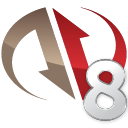
NinjaTrader™ 8
NinjaTrader™ (NT) is now multi-threaded to take full advantage of modern CPUs, and utilizes video card hardware (GPU) acceleration to render charts and all of its UI. NT benefits the most from processor GHz speed. Having more CPU cores will also help NT depending on your trading style's impact as explained below.
NinjaTrader Performance Tips
It is recommended that you also review NT's Performance Tips official documentation page.
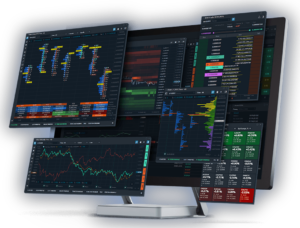
Trading Style and Indicator Impacts
Are you a High Impact or Low Impact user?
In the context of computer hardware, trading style refers to the indicators your trading style uses and the number of charts and instruments your Workspaces typically have.
High CPU impact indicators
Examples of high impact indicators include; order-flow, volume profile, volume footprint, any type of Bid/Ask volume analysis indicators, and fibonacci/support-resistance confluence zone type indicators. The Bid/Ask volume type of indicators are performing calculations on each incoming tick, and confluence zone indicators are analyzing large numbers of data points. With the increasing volatility and trade volume in the markets, the impact will only increase.
Generally speaking, indicators that require the Calculate property to be set to 'On each tick', such as the types mentioned previously, are going to impact the CPU the most. A 3.5 GHz or faster CPU is suggested.
Low CPU impact indicators
Examples of low impact indicators include; moving averages, oscillators, momentum, and trend vs. consolidation strength type indicators. Basically, the indicators included with NinjaTrader™ are simple math formulas that calculate very quickly and are typically calculated only when the bar closes. The exceptions are the Order Flow indicators.
High impact workspaces
Running several chart of the same instrument, to monitor higher time-frame trends, can have a big impact especially if the other time-frames are running order flow/volume profile type of indicators. Combine that with monitoring 8 or more instruments in your workspaces, including workspaces loaded in the background, all adds up to a high impact on the CPU.
If you are only running low impact indicators then you will probably not experience much impact running many instruments.
Tick Replay: T/R has a very very high impact on NinjaTrader during a workspace startup, or when reloading a chart with a lot of days of data on the chart. i.e. Processing the historical data has a high impact on the CPU. Processing real-time data does not. However, the high memory usage remains.
Instruments, such as the /ES futures, with a high average daily volume have a tremendous impact on NinjaTrader. Low daily volume instruments such as the /RTY, not so much. T/R also consumes, and thus requires a lot of memory. e.g. An average workspace uses 1 - 2 GB RAM, without T/R. With T/R enabled on one or two charts, NinjaTrader can easily consume 6 - 8 GB RAM. See the RAM (Memory) section below.
Strategy Analyzer - Optimization: The S/A-Optimization will us a high number or cores and memory as it processes the deferent iterations as quickly as possible. The high memory usage is temporary, and will return to normal after the operation is completed.
Desktop vs. Laptop
It is highly recommended to use a desktop for trading. Laptop CPUs are slower than their desktop CPU equivalent, due to their energy saving design. e.g. An Intel i7-8700B (laptop CPU) @ 3.2 GHz will perform slower than the desktop version Intel Core i7-8700 @ 3.2 GHz. The other issue with laptops is heat mitigation.
Laptops are not properly equipped to displace heat like a desktop is. During volatile trading days, indicators are performing extremely more calculations to keep up with the market's price movements. This causes the CPU to generate a lot more heat. Laptops will slow down the CPU in order to reduce heat stress and protect the CPU from damage. And, of course, that CPU slow down will impact NinjaTrader™'s performance.
High impact users should be using a desktop computer when trading live accounts.
Computer Components
The hardware components are listed in order of importance.

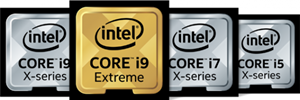
CPU
The best improvement of NT 8 is that each instrument in use will be assigned to run on one of the CPU threads, separately from the other instruments if there are enough CPU threads to do so. Side note, an instrument can only be processed on 1 thread to guarantee the tick data is processed linearly/asynchronous(in the correct order). Processing an instrument's data on 2 threads(synchronous processing) would end up processing the tick data out of order. No bueno 🙂
e.g. An Intel I7 has 8 cores and thus 16 threads (2 threads per core). If your workspace has 10 instruments running, each instrument will run on its own thread. This is an optimal situation, because it leaves 6 threads available for Windows™ and other programs.
An older Intel I5 has 4 cores and 4 threads (No hyper-threading like the I7 or I9 CPUs). If your workspace is running 6 instruments, only 2 instrument will run on their own threads, and 4 instruments will have to share threads. Windows™ and other programs will share those threads as well. This is not optimal during those very volatile days.
Intel I3 and I5 chips typically have 1 thread per core. In the future, they will probably be increased to 2 threads per core. Newer Intel I7 and I9 chips have 2 thread per core. Each generation of chips change the number of cores and threads, so verify the number of threads carefully before you buy a new PC.
Keep in mind: The CPU you choose should have a few extra threads available for Windows™ and other programs to run on to minimize any impact on the threads that NT is using. Also, this information is generalized.
High impact users
These users should be using a Intel I7 or I9 CPU at +4 GHz speed or faster. Typically, the Intel I7 has 16 threads, and the I9 has 20 threads. If you think you may be an extreme impact user then consider the Intel Xeon Gold 6256 CPU running at 4.5 GHz with 24 threads. As each new generation of CPU chips are released this info will quickly become outdated.
Keep in mind: There should be a few threads unused by NinjaTrader™ for Windows™ and other programs.
Low impact users
These users should be using an Intel I5 or better CPU at +3 GHz speed or faster. The older Intel I5 has 4 - 6 threads. The 2020 10th generation has 12 threads, leaving plenty of processing threads for Windows™ and other programs.
Backtesting, S/A - Optimization, & Market Playback
For backtesting (e.g. on a chart, in the Strategy Analyzer, or via the Playback connection) you want a fast CPU. The time it takes to backtest is determined by raw CPU speed, not by more threads. S/A -Optimization utilizes both CPU speed and many cores. Optimization is simply thousands of backtest iterations where a dozer or more backtests are run in parallel in batches.

RAM (Memory)
For a trading workspace, NinjaTrader™ typically uses approximately 4 GB of RAM or less. In extreme cases it may use up to 8 GB of RAM.
- For low impact users, 8 GB of system RAM is plenty. 4 GB for NT and 4 GB for Windows™ and other programs.
- For high impact users, 16 GB of system RAM is plenty. 8 GB for NT and 8 GB for Windows™ and other programs.
For a researching workspace, 16 GB of RAM is suggested. A researching workspace is one where large amounts of chart data is backtested against, or optimization runs are processed. See the Optimization section below.
Tick Replay users: A minimum of 16 GB of system RAM is suggested due to the much high memory consumption that T/R uses.
Strategy Analyzer - Optimization: A bare minimum of 12 GB of RAM is suggested for light duty optimizing. Approximately 10,000 to 30,000 iterations on a small amount of 1 Minute chart data (6 - 9 months of data).
- 16 GB of RAM is suggested for approx. a few 100,000 iterations on a year or two of 1 Minute chart data.
- 32 GB of RAM is suggested for higher optimization runs.
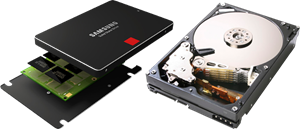
Hard Drive
The hard drive(HD) speed is only important when NT is initially loading historical market data from the HD into memory. This occurs when NT is starting up, and when a Workspace is opening for the first time. The one exception to this is if you have data recording enabled in the Options menu. Extreme high volume days in combination with many instruments open may generate more data than a slow HDD can keep up with.
There are two types of HD's, Hard Disk Drives (HDD) and Solid State Drives (SSD). SSD's range from being 50 to 250 times faster than HDD's, but the cost is significantly higher. As prices for SSD's drop, the cost becomes less of a concern and should become standard for a trading computer.
In conclusion, an SSD is extremely nice to have, but the "bang for the dollar" is limited to the historical data loading phase. The HD is not really helpful after a chart is loaded and running on real-time data, because that occurs in memory(RAM) not the HD.
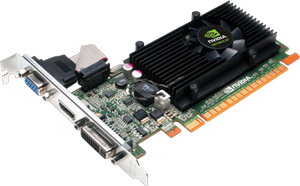
Video Card
NT 8 now utilizes GPU 2D graphics acceleration. High end expensive gaming graphics cards will not return any value for the cost, because NT does not use 3D graphics. It only uses simple 2D graphics, and therefore an entry level graphics card is all that is needed to help NT.
The two important specs for picking a video card are the number of monitors it supports, and the amount of onboard memory. Most video cards support two monitors these days. There are some specialty cards that support four or more monitors. A good guide for onboard video memory is 1 GB per monitor. e.g. If the video card supports two monitors it should have at least 2 GB of memory.
Examples of low cost entry level graphics cards:
- NVIDIA GeForce
- GTX 750 thru 780
- GTX 1050 or faster
- GTX 1650 or faster
- AMD Radeon
- HD 6870
- HD 6970
- HD 7700-serie
- HD 7950
- R9 270X
- R7 370
Motherboard
The motherboard typically has little importance to the average trader. However, there are two things that you may want to consider.
If you choose to use SSD hard drives then you may want to consider using a motherboard with a onboard RAID controller capable of RAID 1 and/or RAID 5 to insure system integrity if a drive fails. Use this link to watch a quick video on RAID technology.
The other consideration is the accuracy of the motherboard's clock. The motherboard clock is how the Windows™ OS knows what the date a time is. NT uses time stamps from Windows™ to display information that is time based. If time accuracy to fractions of a second are important in your trading style then this is something to consider. Information on the accuracy of the motherboard's time clock is difficult to get. (https://forum.ninjatrader.com/forum/ninjatrader-8/platform-technical-support-aa/1200306-timestamp-issues-with-kinetick-data-live-versus-historical?p=1200390#post1200390)
Disclosure
No actual hardware testing has been performed by SharkIndicators. This information is based on our 20+ years of NinjaTrader knowledge and experience, combined with information from NinjaTrader's documentation and our multiple decades of computer hardware knowledge. The information on this page is generalized information.
Glossary
Clock cycle: This is the smallest unit of a CPU calculation/instruction. It is similar to how a tick is the smallest price unit any instrument can trade at. The faster the CPU is the more clock cycles per second it is capable of.
CPU: Central Processing Unit. The CPU is the primary component of the computer that processes software instructions. It runs the operating system and applications, constantly receiving data from the user or software programs. It constantly processes data and produces output/results, which is typically displayed on the screen, or may be stored to the hard drive.
GPU: Graphics Processing Unit. NinjaTrader™ uses the GPU to accelerate drawing the chart windows and all the other NT windows (i.e. Control Center, SuperDOM, Market Analyzer, etc.).
High impact: This refers to indicators that require relatively high clock cycles to perform their complex calculations. These are typically order flow, volume profile, and volume footprint type of indicators. NT's Order Flow+ indicators would be considered medium impact. 3rd party vendor indicators are usually calculating far more complex types of analysis' than NT's Order Flow+ indicators, and thus are in the high impact range.
Low impact: This refers to indicators that use relatively few clock cycles to do their simple calculation. The vast majority of indicators that come with NT are low impact.
NT: This is the common abbreviation for NinjaTrader™.
Windows: This is the common abbreviation for Microsoft Windows operating system.
